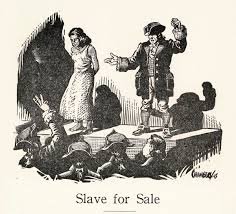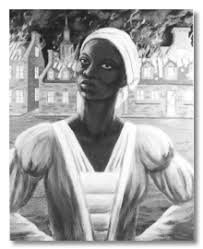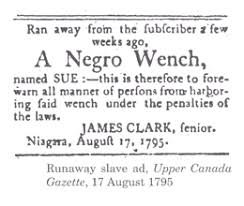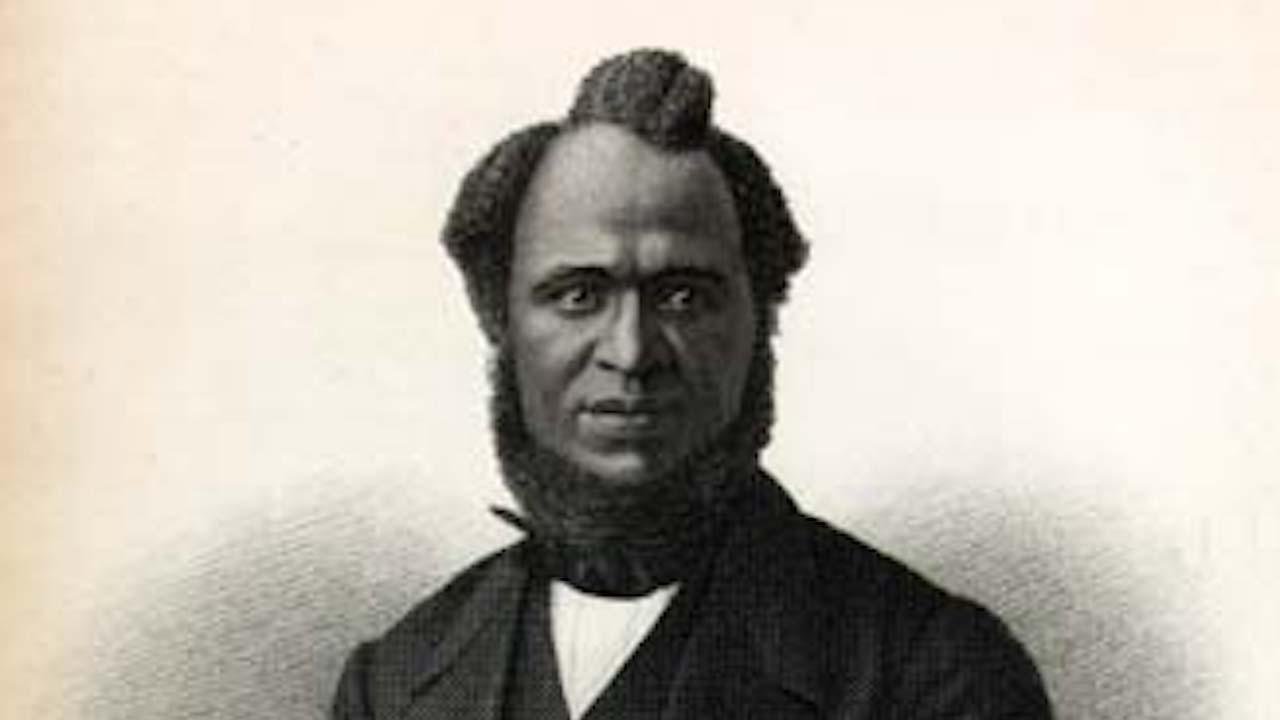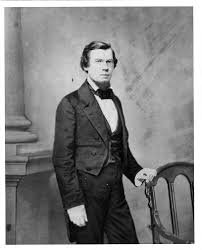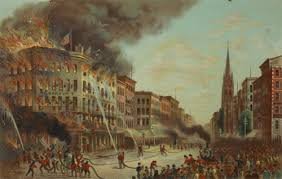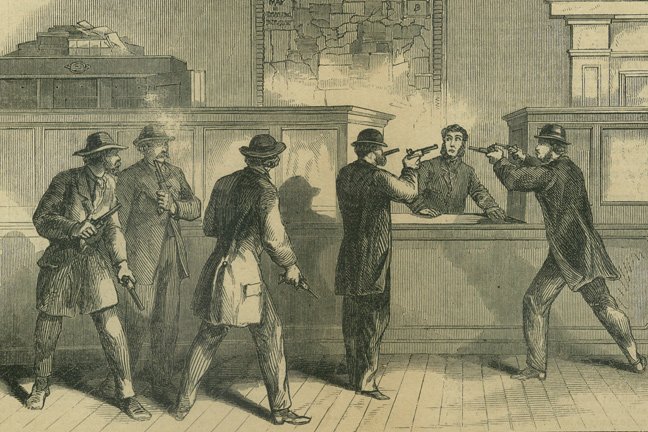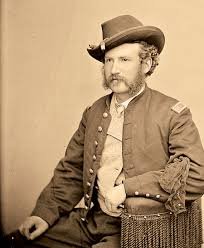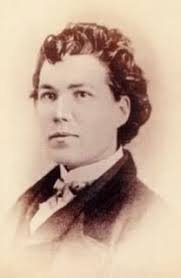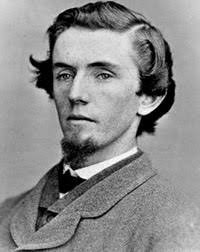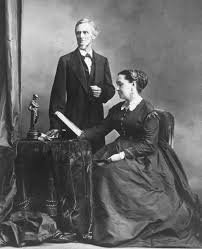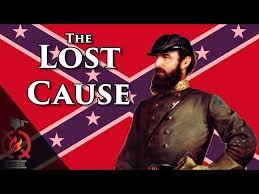CANADA AND THE CIVIL WAR PLOTS AGAINST LINCOLN:
TEACHING RESOURCES
For teachers and students, here are text, audio and video resources for understanding Canada’s involvement in the American Civil War, based on my book, The North Star. (Read more about the book here.)
You can also contact me to arrange for in-person or Zoom presentations for your school, classroom or teachers’ conference.
For an overview of the many themes and revelations on this historic event, start by downloading a PDF version of the my slideshow on the left, Teaching the Hidden History of Canada and the American Civil War. Then choose any of the topics and resources below. More books are listed at the end of the page.
______________________________________
You can also watch the one hour-long video presentation of the slide show shown on the left by clicking here.
________________________________________
For the best and quickest summary of these issues, teachers and students can also read these two newspaper features:
Plotting against Lincoln in Montreal, city of Southern spies, Montreal Gazette, April 22, 2023
The American Civil War was Canada’s fight, too. And we were on the wrong side, Globe and Mail, April 28, 2023.
SLAVERY IN CANADA:
THE HISTORY OF SLAVERY
Long before Canada became a haven for escaped enslaved people from the U.S., it had its own sorry history of bondage. Slavery was only abolished in Canada in 1834.
The history of Black Slavery in Canada (Canadian Museum of Human Rights)
Slavery - the Virtual Museum of New France (Canadian Museum of History)
The enslavement of Blacks in Canada by Dr. Afua Cooper (Canadian Historical Association)
MARIE-JOSÈPHE-ANGÉLIQUE
An enslaved woman who tried to escape and was tortured and executed for the burning of Montreal in 1734
Books and Videos:
The Hanging of Angélique: The Untold Story of Canadian Slavery and the Burning of Old Montréal by Dr. Afua Cooper
Marie-Josèphe Angélique : Montreal on Fire, Episode 3 in a six-part podcast from Historica Canada
City of Montreal websites:
Memoires de Montréal (Official site - City of Montreal in French)
Who set fire to Montreal: The Trial of Marie-Josèphe Angélique (Official site - City of Montreal in French)
Place Marie-Josèphe-Angélique Montreal commemorates her
SLAVE ADS IN THE newspapers
‘To be sold a wench - Slave Ads of the Montreal Gazette, 1785-1805 (Thesis by Tamara Extian-Babiuk)
See the many examples at the end of the thesis included these:
Fugitive slave advertisements: An untapped archive of resistance (Early Canadian History.ca)
Examples to look at:
THE FIGHT TO KEEP JOHN ANDERSON FREE
Fleeing from slavery to Canada from the U.S.,John Anderson killed a slave master in self-defence. Threatened with extradition, he was saved by a protest movement in Canada on the eve of the Civil War.
The Anderson Extradition Case (Canadian Encyclopedia)
Montrealers helped save fugitive slave from gallows in 1861 (Montreal Gazette)
THE UNDERGROUND RAILROAD
An estimated 30,000 enslaved people made their way from the slave South to freedom in Canada.
The Underground Railroad: Next Step Freedom (Video - Amherstburg Freedom Museum)
The Underground Railroad: Next Stop Toronto (Book - 2022)
THE CONFEDERATE SECRET SERVICES in canada:
As the tide turned again st the slave South in early 1864, Confederate President Jefferson Davis set up a Secret Service in Canada to challenge President Abraham Lincoln from a new northern front.
Original documents:
Confederacy authorizes $1 million for ‘secret services’. (PDF original document from US National Archives)
Confederate Bill authorizing a secret service (Orignal document 1864)
Articles:
Confederate Expenditures for Secret Service Article by William Tidwell
Jacob Thompson, leader of the Confederate Secret Services in Canada (Wikipedia)
Books:
April '65: Confederate Covert Action in the American Civil War Book by William Tidwell
Come Retribution: The Confederate Secret Service and the Assassination of Lincoln by William A. Tidwell (Amazon.ca)
(Also available in libraries)Blood on the Moon: The Assassination of Abraham Lincoln. Book by Edward Steers
See also The North Star, Chapters 14, 15, 16, 26
THE TERROR RAIDS FROM CANADA:
Financed by the Confederacy and operating legally in “neutral” Canada, the Confederates in 1864 and 1865 carried out a wide variety of terror attacks in the northern U.S. border states - from arson to bank robberies to attempts at bio-terrorism.
MORGAN’S RAIDERS
Morgan’s Radiers (Wikipedia biography)
The Civil War memoir of George “Lightning” Ellsworth. Canadian who joined the Confederate raiders
Books:
Confederate operations in Canada and New York by John Headley. First hand account
See also The North Star, Chapter 15
THE NEW YORK ARSON ATTACK
The Confederate Plot to Burn Manhattan By Walter Giersbach (Military History Online)
Newspaper articles from the time:
The Plot New York Times, November 27, 1864
Attempt to burn the city, New York Herald, November 27, 1864
Books:
Confederate operations in Canada and New York Book by Confederate raid leader John Headley. Chapter 28
Dixie & the Dominion: Canada, the Confederacy, and the War for the Union by Adam Mayers (Amazon.ca)
(Also available in libraries) Chapter 14See also The North Star, Chapter 23
THE YELLOW FEVER PLOT
The evidence against Blackburn conclusive, New York Times, May 7, 1865
The Yellow Fever Plot New York Times, May 16, 1865
Arrest warrant affidavit, New York Times, May 25, 1865
Dr. Luke Blackburn Biography (Wikipedia)
Books:
The Confederate Yellow Fever Conspiracy by Leon Greene
Luke Pryor Blackburn (Largely uncritical book by Nancy Disher Baird)
See also The North Star, Chapters 18, 37
(Credit: St. Albans Historical Museum)
THE ST. ALBANS RAID
The St. Albans Raid History - Excellent site by the St Albans Historical Museum
Newspaper archives:
Confederate fighters brought the U.S. Civil War to Montreal. (Gazette Archives)
St Albans Outrage, Ottawa Citizen, October 21, 1864
“Account of the Raid by an eye-witness” New York Times, October 21, 1864
“Capture of Twelve Brigands” New York Times, October 23, 1864
BOOKS
Dixie & the Dominion: Canada, the Confederacy, and the War for the Union by Adam Mayers (Amazon.ca)
(Also available in libraries) Chapter 11See also The North Star, Chapter 21
THE ST. ALBANS TRIAL
The trial of the St. Albans raiders turned into a fiasco and infuriated the Americans when the Canadian justice system treated the Confederate conspirators extremely lightly.
The trial:
Full transcript of the trials, Internet Archive
Newspaper accounts:
Leader Bennett Young’s statement to the court, New York Times, November 16, 1864
“Close of the Case in Montreal: Disgraceful Conduct of the Prisoner's Counsel” New York Times, April 8, 1865
The key players:
Charles Coursol, the judge - Dictionary of Canadian Biography
Bernard Devlin, the prosecutor - Dictionary of Canadian Biography
Books:
See also The North Star, Chapters 24, 25
MONTREAL POLICE CHIEF GUILLAUME LAMOTHE
The Montreal police chief was exposed for his secret dealings with the Confederates and was forced to resign.
Original documents:
Investigation by the Police Committee of the City Council of Montreal, Complete transcript
Lamothe’s revealing letter to his son, 1895 (Library and Archives Canada)
Books:
The North Star, Chapters 24, 25, 31
THE ELITES IN CANADA: POLITICIANS, NEWSPAPERS AND THE CATHOLIC CHURCH
The bankers, newspaper editors, leading politicians and church leaders expressed sympathy for the South and often openly criticized Lincoln.
The banker and mayor of Montreal: Henry Starnes, Dictionary of Canadian Biography
Testimony from the Lincoln Conspiracy Trials, from his chief teller Robert Campbell
See also The North Star, Chapters 16, 22, 24
The Toronto Aristocrat, George Taylor Denison III (Toronto Star, April 22, 2023)
>Dixie & the Dominion: Canada, the Confederacy, and the War for the Union by Adam Mayers (Amazon.ca)
(Also available in libraries) Chapter 18
>(See also The North Star, Chapters 17, 28, 42, 43, 44, 46)The Catholic Church in Quebec (“Plotting against Lincoln,” Montreal Gazette, April 22, 2023
(See also The North Star, Chapters 14, 35, 39 )Politicians who supported the South
(See The North Star, Chapters 6, 42, 46 )The newspapers that supported the South
(See The North Star, Chapters 6, 29, 33, 36, 48 )
THE CANADIAN HEROES IN THE UNION ARMY:
Tens of thousands of ordinary Canadians enlisted in Lincoln’s army and several of them played a key role in the history of the war.
EDWARD P. DOHERTY
Doherty was a Quebec man who enlisted in the Union Army at the very start of the war and by 1864 was picked to head the army regiment that hunted down Lincoln’s assassin.
His own words:
Doherty’s five letters to the Montreal Gazette at the start of the war. (Small book for sale for only $1.25)
Doherty’s article in the New York Times about the Battle of Bull Run, August 6, 1861
Doherty’s account of the capture of John Wilkes Booth, Century Magazine (January, 1890)
Edward P. Doherty papers, Abraham Lincoln Presidential Library
Articles:
Hunting Lincoln’s Killer. Cover story in Canadian History magazine
Battle for the War Department Rewards for the Capture of John Wilkes Booth, Journal of the Abraham Lincoln Association, Volume 32, Issue 2, September 2011.
Books:
Chasing Mosby, Killing Booth: The 16th New York Volunteer Cavalry by James Carson
Manhunt: The Twelve Day Hunt for Lincoln’s Killer by James Swanson (Amazon.ca)
(Also available in libraries)
See also The North Star, Chapters 1, 4 , 5, 7, 34, 40, 46
THE BLACK DOCTORS: ANDERSON ABBOTT and ALEXANDER AUGUSTA
When Lincoln opened up the ranks of his army to Blacks, two doctors educated in Canada - Alexander Augusta, an American, and Canadian-born Anderson Abbott, signed up. These pioneers faced racism and fought for civil rights.
In their own words:
Abbott on Lincoln’s assassination, May 1901
Anderson Abbott papers, National Library Medicine, presented by Jill Newmark
Augusta’s letter to Lincoln to join the Union Army, January 1863
Augusta’s letter on the Baltimore mob attack, May 15, 1863
Newspapers from the time:
Augusta's battle to join the Union Army - New York Times March 30, 1863
Mob attack in Baltimore against Augusta. Baltimore Sun, May 2, 1863
Websites and articles:
Alexander Augusta - Doctor, Teacher and Human Rights Activist. by Heather Butts, National Library of Medicine
The Indomitable Dr. Augusta, Gerald Henig, Army Military History
“Augusta - Winning the Right to Ride: How D.C.’s streetcars became an early battleground for post-emancipation civil rights,” Kate Masur, Slate, December 26, 2017.
Abbott: Canada’s First Black Physician, Toronto Star, February 8, 2018
Binding Wounds, Pushing Boundaries: African Americans in Civil War Medicine
Contraband Hospitals, Jill Newmark, BlackPast.org, March 28, 2012,
Books:
Anderson Ruffin Abbott by M. Dalyce Newby
African Canadians in Union Blue: Volunteering for the Cause in the Civil War by Richard M. Reid
My Brother's Keeper: African Canadians and the American Civil War by Bryan Prince
African American Medicine in Washington, D.C.: Healing the Capital During the Civil War Era, By Heather M. Butts
See also The North Star, Chapters 11, 12, 13, 27, 32, 43
EMMA EDMONDS
Emma Edmonds was a New Brunswick farm girl who enlisted in the Union Army disguised as a man and for two years was a nurse and mail carrier. Her book about her exploits became a national bestseller.
In her own words:
Her own book: Nurse and Spy in the Union Army
Websites and articles:
“A Canadian in the American Civil War: Sarah Emma Edmonds,” John Boyko, May 10, 2014
Books:
The Mysterious Private Thompson: The Double Life of Sarah Emma Edmonds, Civil War Soldier by Laura Leedy Gansler
She Rode with Generals, by Sylvia Dannett (WorldCat Library)
See also The North Star, Chapters 1, 2, 4, 5, 7, 10, 45
THE ASSASSIN: JOHN WILKES BOOTH IN MONTREAL:
Lincoln’s killer spent two weeks in Montreal just months before the assasination, making clear his aims to target Lincoln.
In his own words:
Booth’s letter published in the New York Times, April 21, 1865
Right or Wrong, God Judge Me: The Writings of John Wilkes Booth (Amazon.ca)
(Also available in libraries)
Newspaper articles:
When Booth was in Montreal, Montreal Star, December 6, 1902, Part 1 and Part 2
Was plot to assassinate Abraham Lincoln born during John Wilkes Booth’s mysterious trip to Montreal? Canadian Press, October 13, 2014
Books:
American Brutus: John Wilkes Booth and the Lincoln Conspiracies by Michael W. Kauffman (Amazon.ca)
(Also available in libraries)Fortune’s Fool by Terry Alford (Amazon.ca)
(Also available in libraries)Dixie & the Dominion: Canada, the Confederacy, and the War for the Union by Adam Mayers (Amazon.ca)
(Also available in libraries) Chapter 16See also The North Star, Chapters 22, 34, 36, 38
THE ACCOMPLICE: JOHN SURRATT IN QUEBEC:
John Surratt was a close friend and accomplice of Booth, helping him in an early plot to kidnap Lincoln. After the assassination, he fled to Quebec where for several months he was hidden with the help of the Catholic Church
In his own words:
Surratt’s Speech in Washington, As reported in the Washington Evening Star December 7, 1870
(Full text of the speech here)A visit to Surratt, New York Times, April 8, 1867
Books:
John Surratt: The Lincoln Assassin Who Got Away by Michael Schein (Amazon.ca)
(Also available in libraries)
See also The North Star, Chapters 28, 29, 30, 35, 39,41, 47
THE EX-PRESIDENT: JEFFERSON DAVIS IN CANADA:
After being released from. jail two years after the end of the Civil War, the defeated Confederate president Jefferson Davis came to Montreal for several months where he was treated as a hero.
Newspaper articles from the time:
Davis at the Royal Theatre in Montreal, New York Times, August 4, 1867
Davis at the Royal Theatre in Montreal, New York Herald, July 19, 1867
Davis speaks in Lennoxville, New York Times, July 7, 1867
Davis in Niagara, New York Times, June 17, 1867
Articles and websites:
Jefferson Davis found refuge in Montreal (The Gazette)
A Confederate in Canada by Patrick Lacroix
Books:
See The North Star, Chapters 42
THE PLAQUE IN MONTREAL HONOURING DAVIS:
A plaque honouring Jefferson Davis, the president of the slave Confedarcy, was erected on the walls of the Bay department stroe in Montreal in 1957 where it stayed for 60 years until a controversy erupted in 2017.
News stories:
“Confederate plaque on Montreal Hudson's Bay store removed” CBC News, August 15, 2017
It was wrong to remove plaque (Toronto Star)
Other debates on statues and memorials:
Should statues of Sir John A. Macdonald be taken down?, Toronto Star June 2, 2021
Pro and Con: Historic Statue Removal in the United States, Britannica.com
Books:
See The North Star, Epilogue
THE LOST CAUSE:
The history of most wars is written by the victors but in the case of the Civil War, the supporters of the slave South have succeeded in creating the myth of a heroic South that fought a “lost cause” for rights and freedoms. The battles continue to this day with attempts to wipe out teaching about racism and slavery in American schools.
Lost Cause of the Confederacy, Wikipedia
"The Confederacy Was Built on Slavery. How Can So Many Southern Whites Think Otherwise?". The Washington Post. April 16, 2020
"Losing the 'Lost Cause': SPLC Launches Billboard Campaign to Educate Communities On False Narrative Behind Confederate History Month". Southern Poverty Law Center, April 6, 2024.
"The Civil War Never Stopped Being Fought in America's Classrooms. Here's Why That Matters". Time Magazine. January 24, 2024
See also The North Star, Chapter 48
THE BEST BOOKS ON CANADA AND THE AMERICAN CIVIL WAR:
Canada’s Role in the U.S. Civil War:
Dixie & the Dominion: Canada, the Confederacy, and the War for the Union by Adam Mayers (Amazon.ca)
(Also available in libraries)
Blood and daring : how Canada fought the American Civil War and forged a nation by John Boyko (Amazon.ca)
(Also available in libraries)
Montreal, city of secrets : Confederate operations in Montreal during the American Civil War by Barry Sheehy (Amazon.ca)
(Also available in libraries)
The Civil War Years: Canada and the United States by Robin Winks (Amazon.ca)
(Also available in libraries)
The Confederate Secret Service in Canada:
Come Retribution: The Confederate Secret Service and the Assassination of Lincoln by William A. Tidwell (Amazon.ca)
(Also available in libraries)
April '65: Confederate Covert Action in the American Civil War by William A Tidwell (Amazon.ca)
(Also available in libraries)
Blood on the Moon by Edward Steers (Amazon.ca)
(Also available in libraries)
Abraham Lincoln:
The Fiery Trial: Abraham Lincoln and American Slavery by Eric Foner (Amazon.ca)
(Also available in libraries)
Canadian Heroes in the Union Army:
The Mysterious Private Thompson: The Double Life of Sarah Emma Edmonds, Civil War Soldier by Laura Leedy Gansler (Amazon.ca)
(Also available in libraries)
Anderson Ruffin Abbott by M. Dalyce Newby (Amazon.ca)
(Also available in libraries)
My Brother's Keeper: African Canadians and the American Civil War by Bryan Prince (Amazon.ca)
(Also available in libraries)
African Canadians in Union Blue: Volunteering for the Cause in the Civil War by Richard M. Reid (Amazon.ca)
(Also available in libraries)




